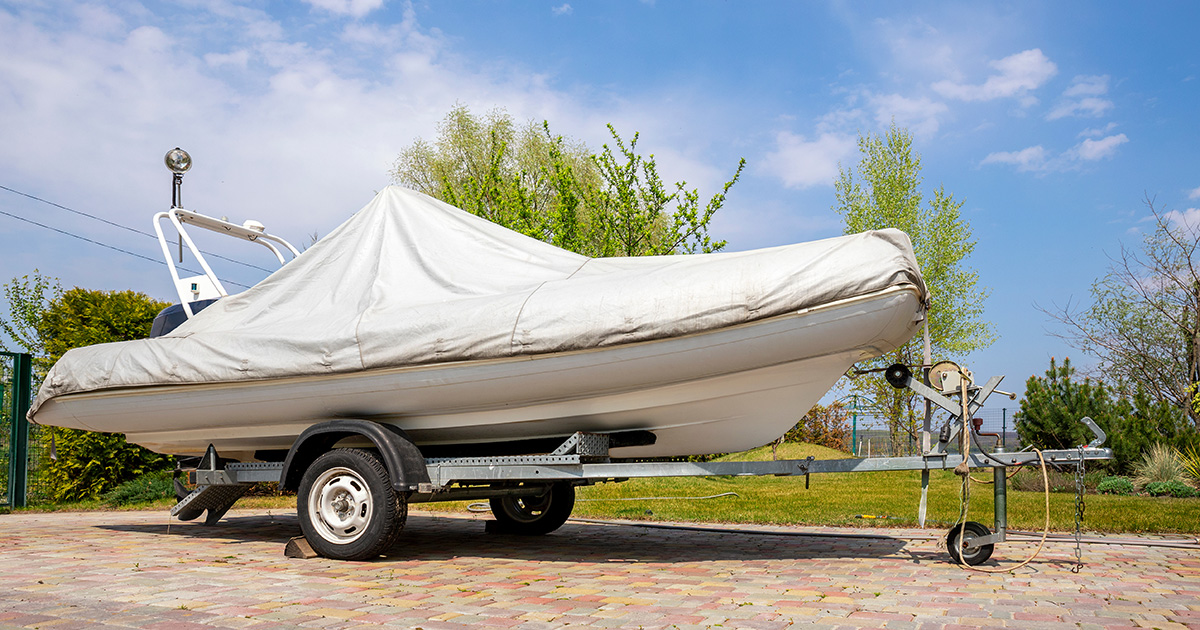
As spring returns, so does the call of the open water.
For boating enthusiasts across Canada, it’s the perfect time to wake up their vessel after winter storage and prepare for a new season on the water. But take note: proper spring prep is key to a safe and enjoyable boating season.
This guide is clear, practical, and beginner-friendly, designed to help you prepare your boat, maintain it properly, and get back on the water with peace of mind.
1. When to start preparing your boat for launch
Across Canada, timing depends on your region.
- Mid-April is suitable in BC or Ontario.
- May works better for Quebec and the Maritimes.
Wait for overnight temperatures to stay above freezing to avoid damage from lingering ice. Book your marina services early—spring is their busiest time.
2. Key steps to take your boat out of winter storage
Proper preparation prevents costly issues later on
- Inspect the hull, deck, and onboard equipment
- Clean both the inside and outside of the boat
- Test all electrical systems and the battery
- Restart the engine carefully
- Review all required safety gear
A well-prepared boat means safer, smoother sailing
3. Must-do checks before launching your boat
Before heading to the ramp, make sure to complete this technical checklist:
- Hull: no cracks or blisters
- Propeller: clean and damage-free
- Fuel tanks and hoses: no leaks or wear
- Bilge pump: working manually and automatically
- Battery: charged and properly connected
These checks are critical for your safety on the water
4. How to clean your boat after the winter
Cleaning boosts your boat’s longevity and your comfort on board
- Exterior: marine-safe soap, soft brush, clean rinse
- Interior: air out, wipe down, disinfect surfaces
- Details: upholstery, hatches, metal fixtures
Use eco-friendly products to protect aquatic life
5. Recommended maintenance products for spring
Stock your spring maintenance kit with these essentials:
- Marine lubricants for engine and steering
- Rust inhibitors for metal parts
- Tank cleaners for fuel and freshwater systems
- Marine wax to guard against UV damage
Routine care lowers the risk of major repairs later
6. Should you launch your boat yourself or hire a pro
It depends on your skills, experience, and boat type
DIY-friendly tasks:
- General cleaning
- Visual inspections
- Safety gear checks
Call in the pros for:
- Engine repairs or diagnostics
- Anti-fouling paint applications
- Hoisting or professional launch services
Making the right call now saves you time and stress later
7. How to restart your boat’s engine safely
This is a crucial pre-launch step
- Check the oil and coolant levels
- Inspect hoses and fittings
- Clean or replace the spark plugs
- Recharge or replace the battery if needed
- Run the engine briefly before launching
A healthy engine uses less fuel and runs more reliably
8. Required boating safety equipment in Canada
Here’s what you must carry on board according to Transport Canada:
- Lifejackets or PFDs for everyone onboard
- A valid fire extinguisher
- Flares, whistle, and signal mirror
- A heaving line, bucket, or manual pump
- VHF radio, GPS, or paper charts
All gear should be up to date and easily accessible.
9. Common mistakes when launching your boat
Even seasoned boaters can fall into these traps:
- Forgetting to install the drain plug
- Using a trailer with worn or underinflated tires
- Running on old fuel from last season
- Failing to secure loose gear onboard
One small oversight can lead to a big headache.
10. Tips for a safe and smooth first outing
Your first day on the water sets the tone for the whole season
- Choose a short, familiar route to test the boat
- Check the weather forecast and inform someone of your plans
- Watch out for floating debris and shallow zones
- Bring an experienced passenger if possible
- Take time to test each system under real conditions
A safe first trip builds confidence for the whole season
Conclusion: a well-prepared boat means a great boating season
Getting your boat ready for spring is more than a checklist. It’s your first act of care toward your vessel.
It’s the foundation for safe, fun, and worry-free navigation in the months to come.
Take the time to prepare, follow this guide, and enjoy your return to the water.


